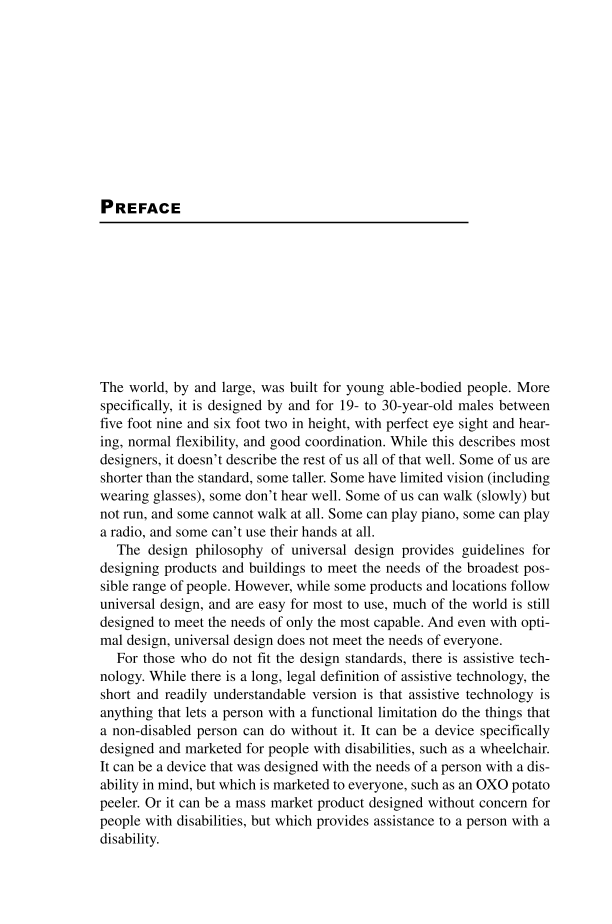PREFACE The world, by and large, was built for young able-bodied people. More specifically, it is designed by and for 19- to 30-year-old males between five foot nine and six foot two in height, with perfect eye sight and hear- ing, normal flexibility, and good coordination. While this describes most designers, it doesnÊt describe the rest of us all of that well. Some of us are shorter than the standard, some taller. Some have limited vision (including wearing glasses), some donÊt hear well. Some of us can walk (slowly) but not run, and some cannot walk at all. Some can play piano, some can play a radio, and some canÊt use their hands at all. The design philosophy of universal design provides guidelines for designing products and buildings to meet the needs of the broadest pos- sible range of people. However, while some products and locations follow universal design, and are easy for most to use, much of the world is still designed to meet the needs of only the most capable. And even with opti- mal design, universal design does not meet the needs of everyone. For those who do not fit the design standards, there is assistive tech- nology. While there is a long, legal definition of assistive technology, the short and readily understandable version is that assistive technology is anything that lets a person with a functional limitation do the things that a non-disabled person can do without it. It can be a device specifically designed and marketed for people with disabilities, such as a wheelchair. It can be a device that was designed with the needs of a person with a dis- ability in mind, but which is marketed to everyone, such as an OXO potato peeler. Or it can be a mass market product designed without concern for people with disabilities, but which provides assistance to a person with a disability.
Document Details My Account Print multiple pages
Print
You have printed 0 times in the last 24 hours.
Your print count will reset on at .
You may print 0 more time(s) before then.
You may print a maximum of 0 pages at a time.

























































































































































































































































